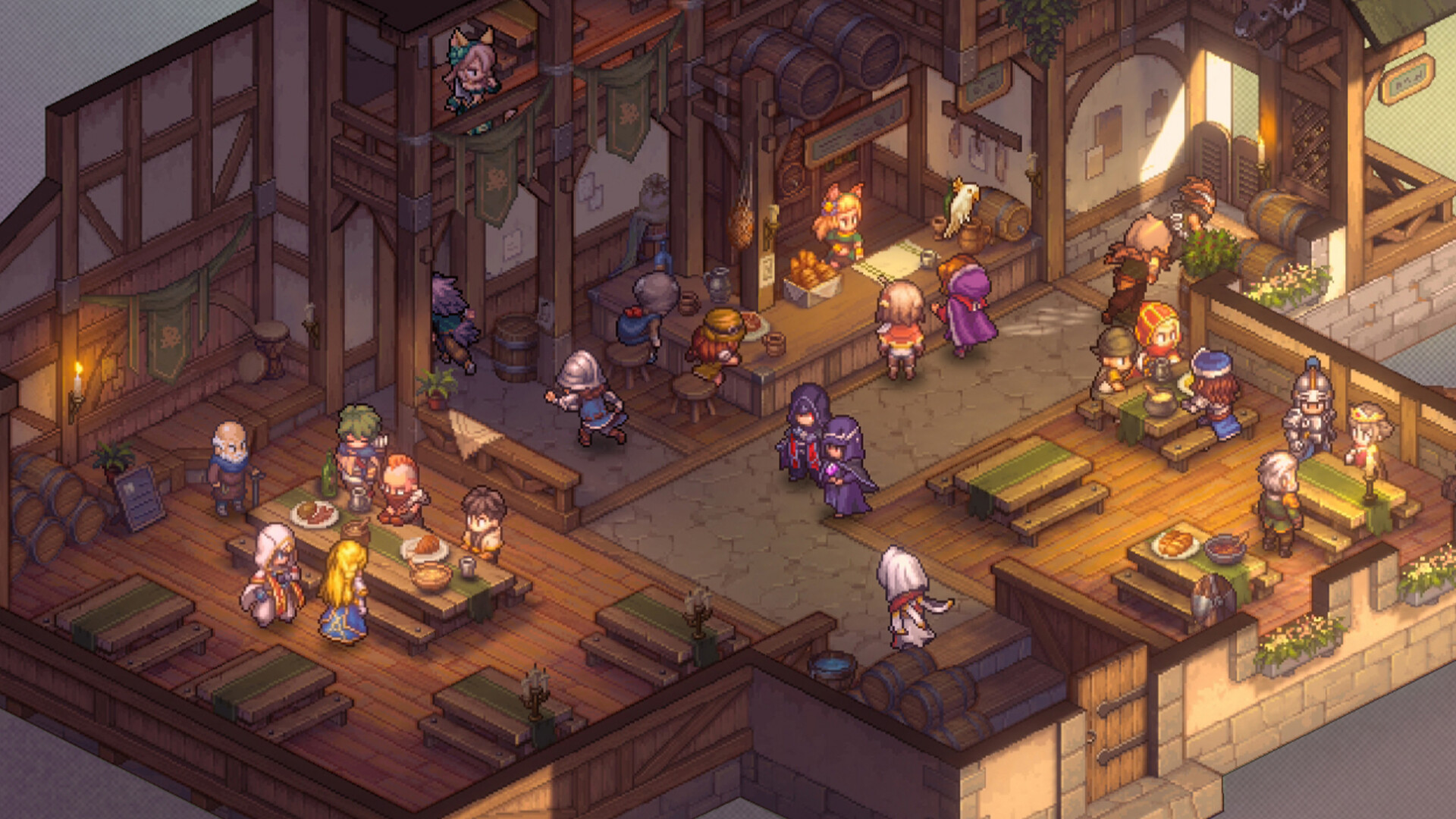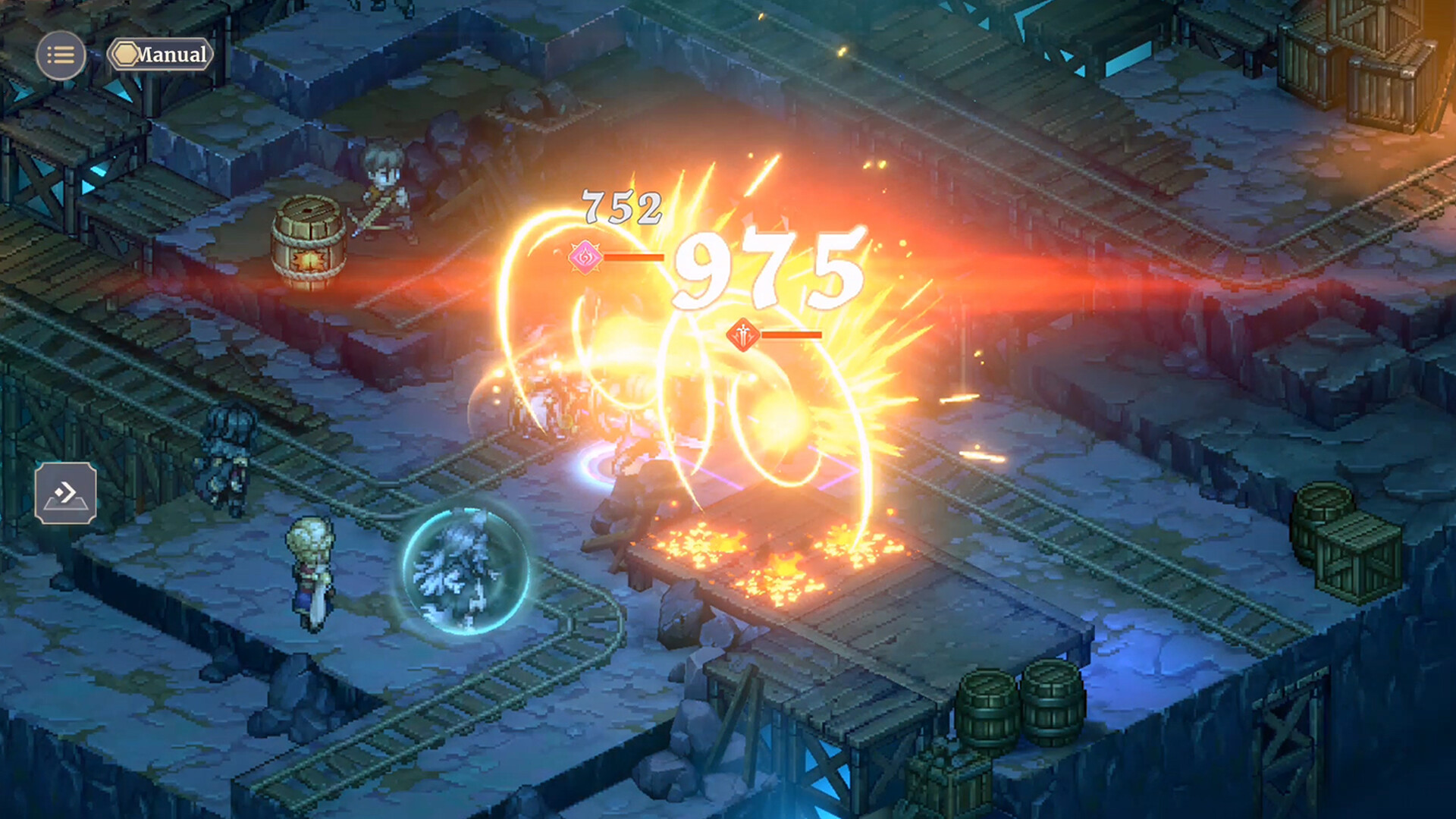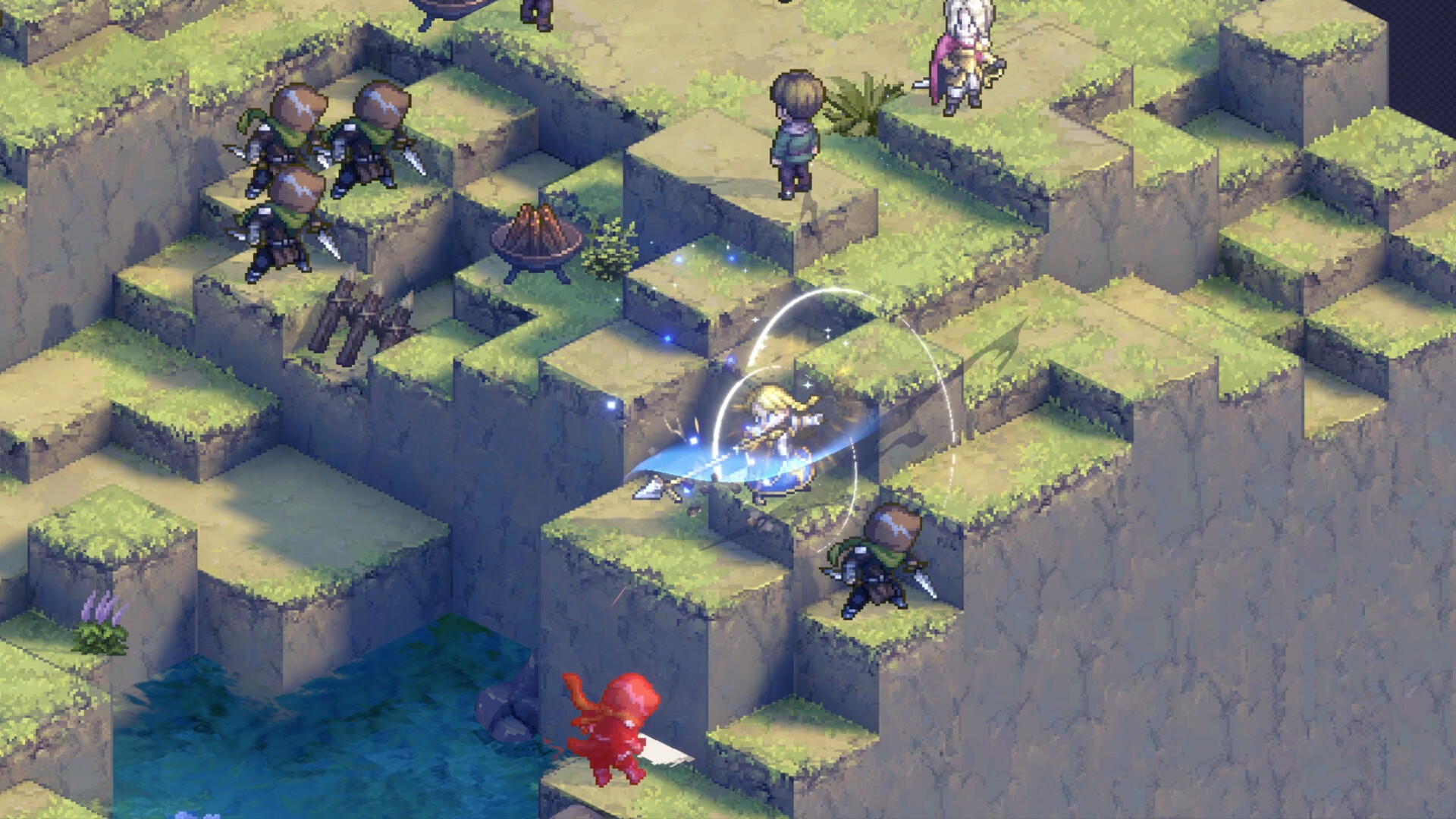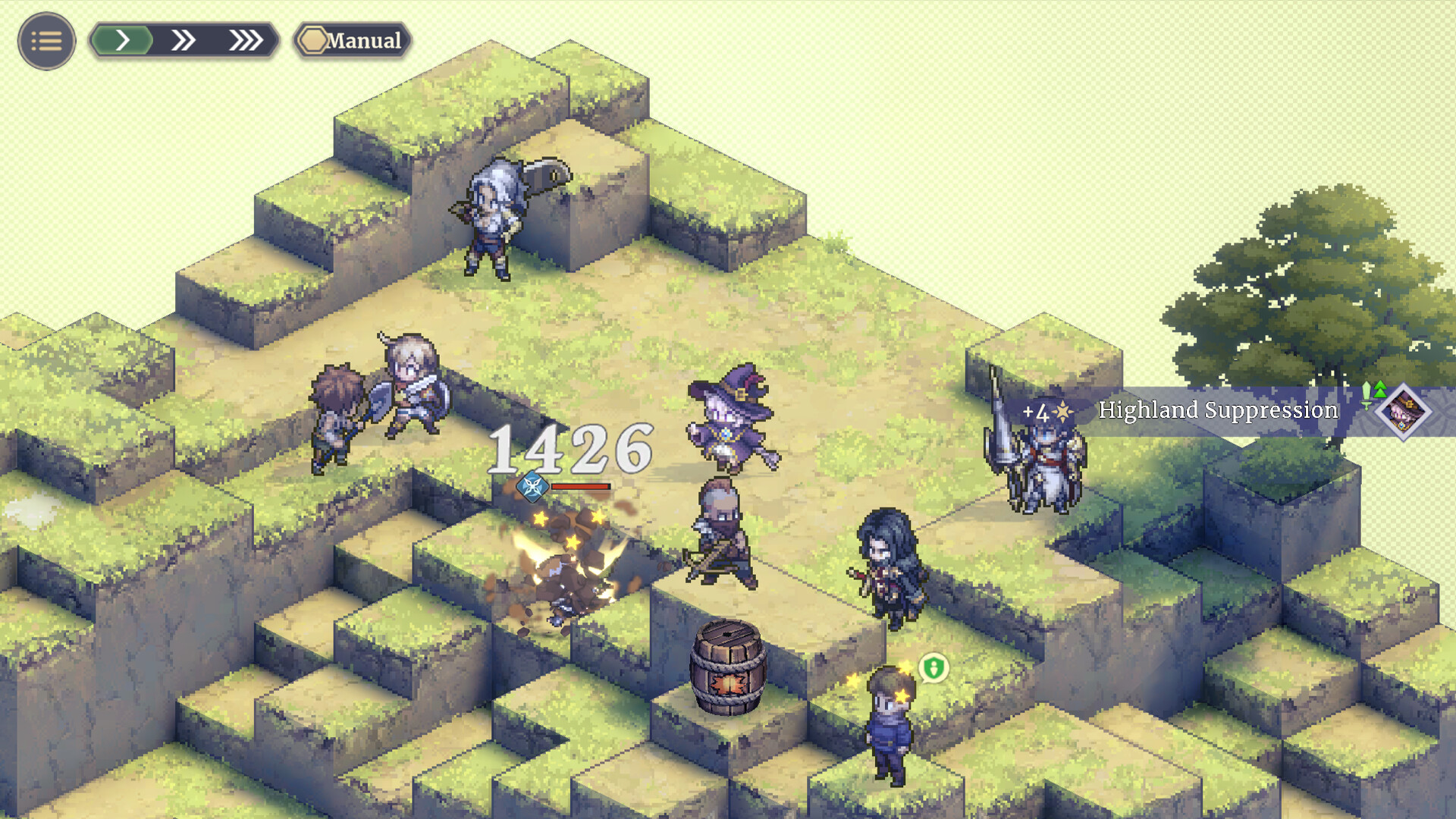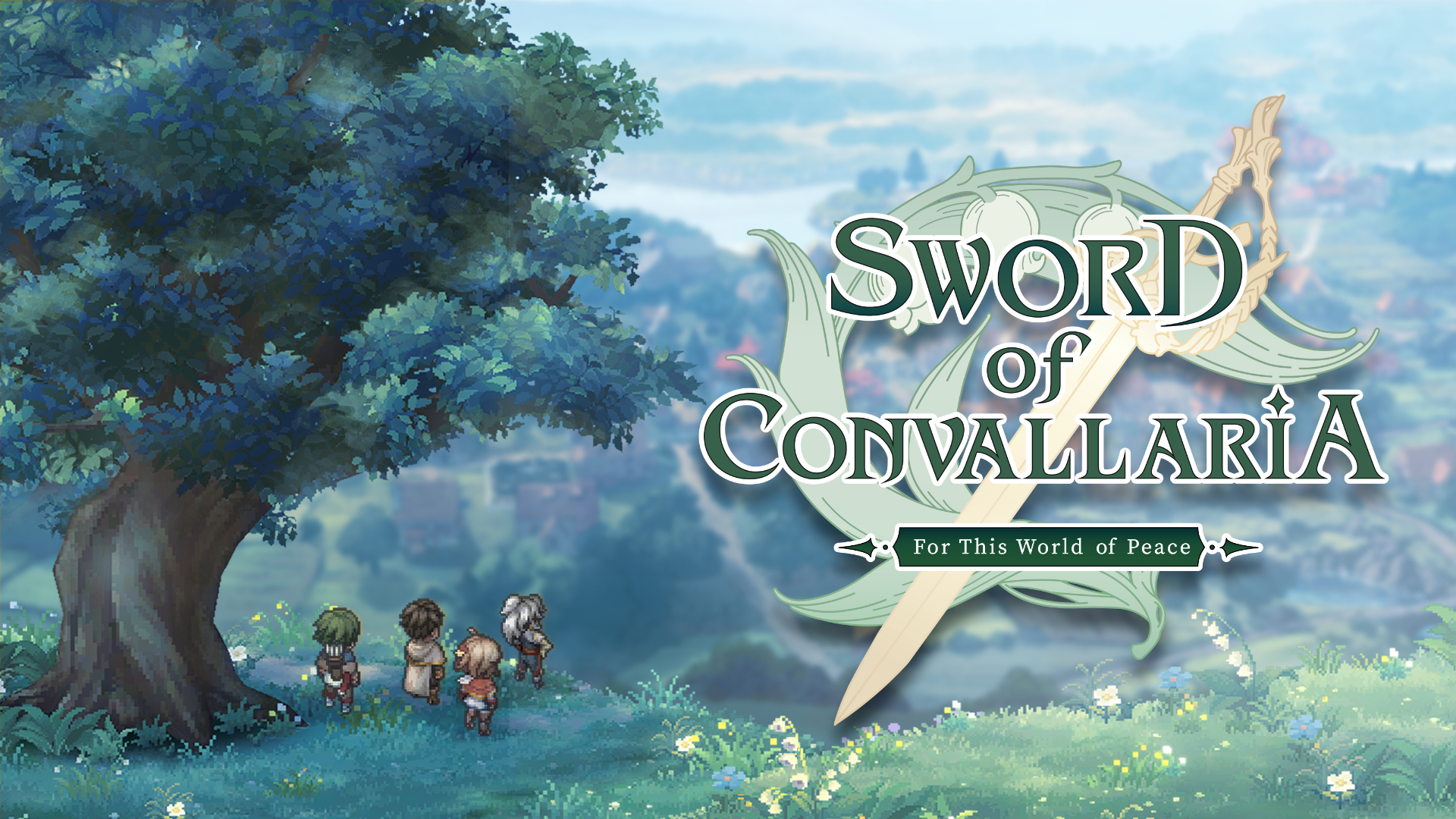Sword of Convallaria
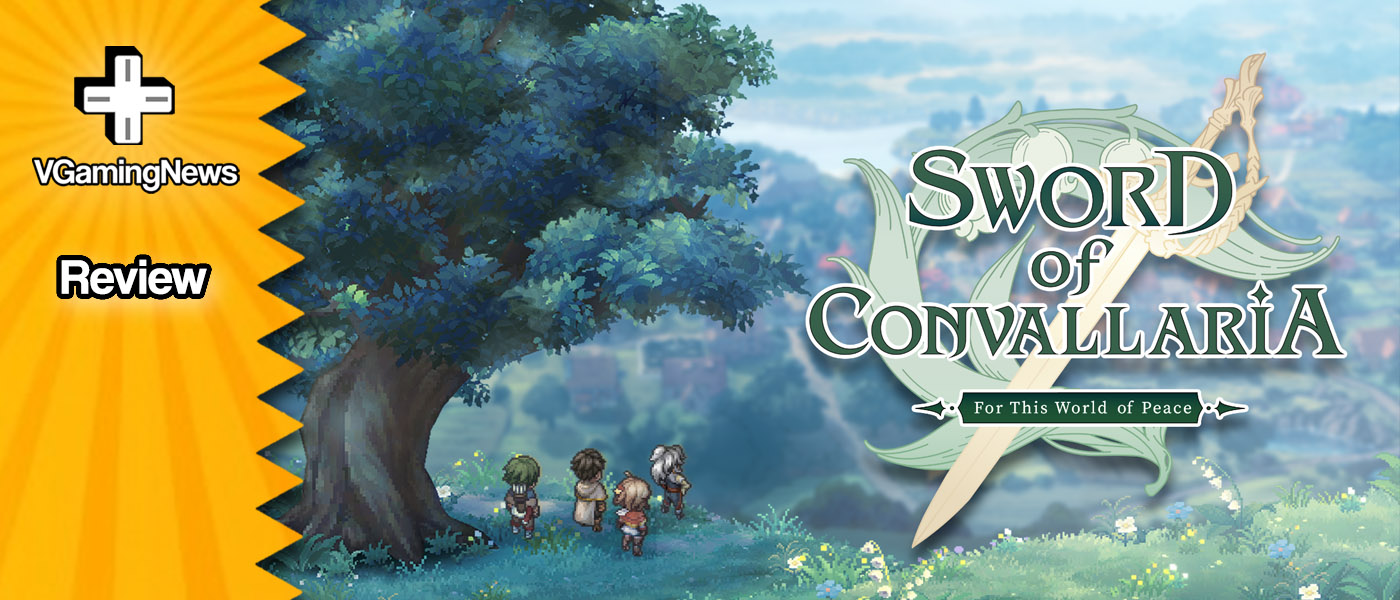
TRPGs might be the bane of my existence when it comes to gaming. I love them right up until the point that they get difficult, and then due to my epic level of sucking, they begin to annoy the crap out of me. As a result, I’ve taught myself to mostly stay away from them. My resolve was soundly tested however, by XD Entertainment’s newest offering, Sword of Convallaria, which immediately grabbed my attention. Some may have been put off by the dual launch on PC and mobile, but after reaching the 5-million downloads mark after only a week or so, I was intrigued to see just what all the fuss was about!
I was struck by the beautiful art style right off the bat, and visually, I don’t think I could like a game more than I do Sword of Convallaria. As a guy who grew up on SNES-era pixel art powerhouses like Secret of Mana, I was blown away by pristine graphics that throw back to my childhood absolutely perfectly. The characters are wonderfully represented on screen, with Epic- and Legendary-level characters boasting especially impressive sprites – but then, even the run-of-the-mill footsoldiers are wonderfully characterful. Levelling up the prettiness even further, XD have folded modern lighting and water visuals in alongside the traditional pixel art, and the final effect really is a sight to behold.
Also standing out is the character artwork, which has been impressively penned in an expressive anime style. Each unit, from the lowliest grunt to the mightiest hero, is portrayed with a beautiful art card that really helps translate the pixel art sprite into a more real figure that you can better connect with from a story standpoint. As you’d expect, the characters are showcased best in the story mode, where you get to learn about their histories and relationships, and even listen to the characters interact, as all the key players are fully voice-acted in Japanese, Korean and Chinese. (I’d have liked an English dub too, and hopefully that comes in the future, but I was left impressed by the Japanese vocal talent, which is a who’s who of popular anime series and video games.)
At a Glance
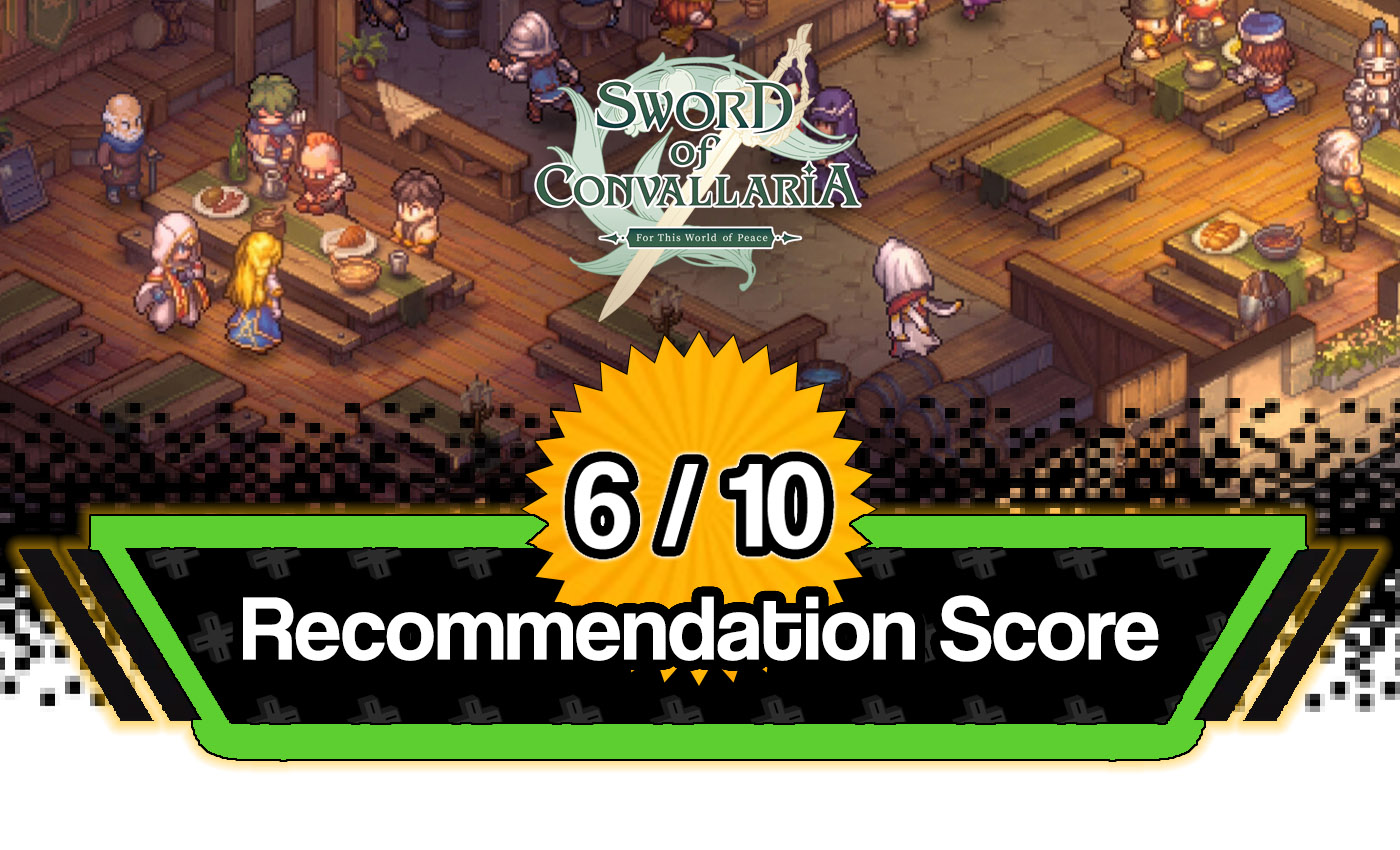
| Positives | Negatives |
| + Top-class artwork + Stylish characters in an engaging (if convoluted) plotline + Complex battle system with tonnes of nuance | – Heavy use of gacha mechanics and microtransactions – Randomised characters completely unbalances the gameplay – Menus are very ‘click’ heavy |
| Available on: | • PC (Steam) • Android • iOS |
Find out about our scoring policy here.
I found the story mode fun, if not a little all over the place – as is customary with many JRPGs. You’re introduced to the main characters, who make up the eponymous Sword of Convallaria, a mercenary group who’ve banded together to protect their homeland, and to a mysterious talking cat called Kuro, who seems to know altogether too much about the universe. With some instruction from your new feline guide, you’ll learn that the world is made up of many dimensions, and moving between these realms allows you to affect the flow of destiny, changing the outcome of events and shaping the fates of your friends and the world. The characters you meet are bold and likeable, though you may have to forgive some of their trope-laden archetypes, like the drunkard mercenary leader and their fiercely loyal adoptive children.
As you progress through the early portions of the game, you’ll recover tarot cards which you’ll use to power up an ancient machine called the Astraraium, and each new card opens up a new dimension to you and your pals, allowing you to take part in various missions and battles. You’ll access all these game modes from the hub world of Elysium, where you’ll also manage your characters, interact with them between levels and even build a cosy home for them to live in. I loved the tarot aesthetic to the dimension hopping, though I was less fond of the incredibly drawn out ‘tutorial’ phase, which continues to drip feed you new mechanics after more than 10-hours of gameplay!
Thoroughly deserving of praise though, is the soundtrack, scored by RPG legend, Hitoshi Sakimoto. Having written the soundtracks to tonnes of famous RPGs, dating all the way to Ogre Battle on the SNES back in 1993, through such favourites as Final Fantasy Tactics, Vagrant Story and Valkyria Chronicles, Sakimoto brings exactly the kind of pedigree you’d want for a new and emerging RPG title. With all the highs and lows of a true adventure, this is a soundtrack to score the most nuanced tale and drive the most epic of battles.
Getting into the meat of the game, however, things are much more up and down. Now, I’m on record as saying that mobile phones can be a viable platform for gaming, and I stand by this statement, but it only took a few minutes of playing Sword of Convallaria to understand why mobile gaming has such a bad reputation.
First of all, absolutely everything in Sword of Convallaria is stashed behind a sub-menu, and requires a multitude of clicks to resolve. Being faced with the interface for the first time, I’ll admit to being somewhat overwhelmed. The UI is absolutely covered in icons, and none of them are labelled (presumably to save space on screen). As you randomly click your way through the various screens, you’re met with all manner of shops and ‘quests’, which all seem to require different collectables to interact with. There’s little to no meaningful explanation for what anything is, and I was loath to spend anything, in case I was unknowingly squandering hard to gather materials. Annoyingly, there just seems to be the expectation that you’ll just figure it out as you go.
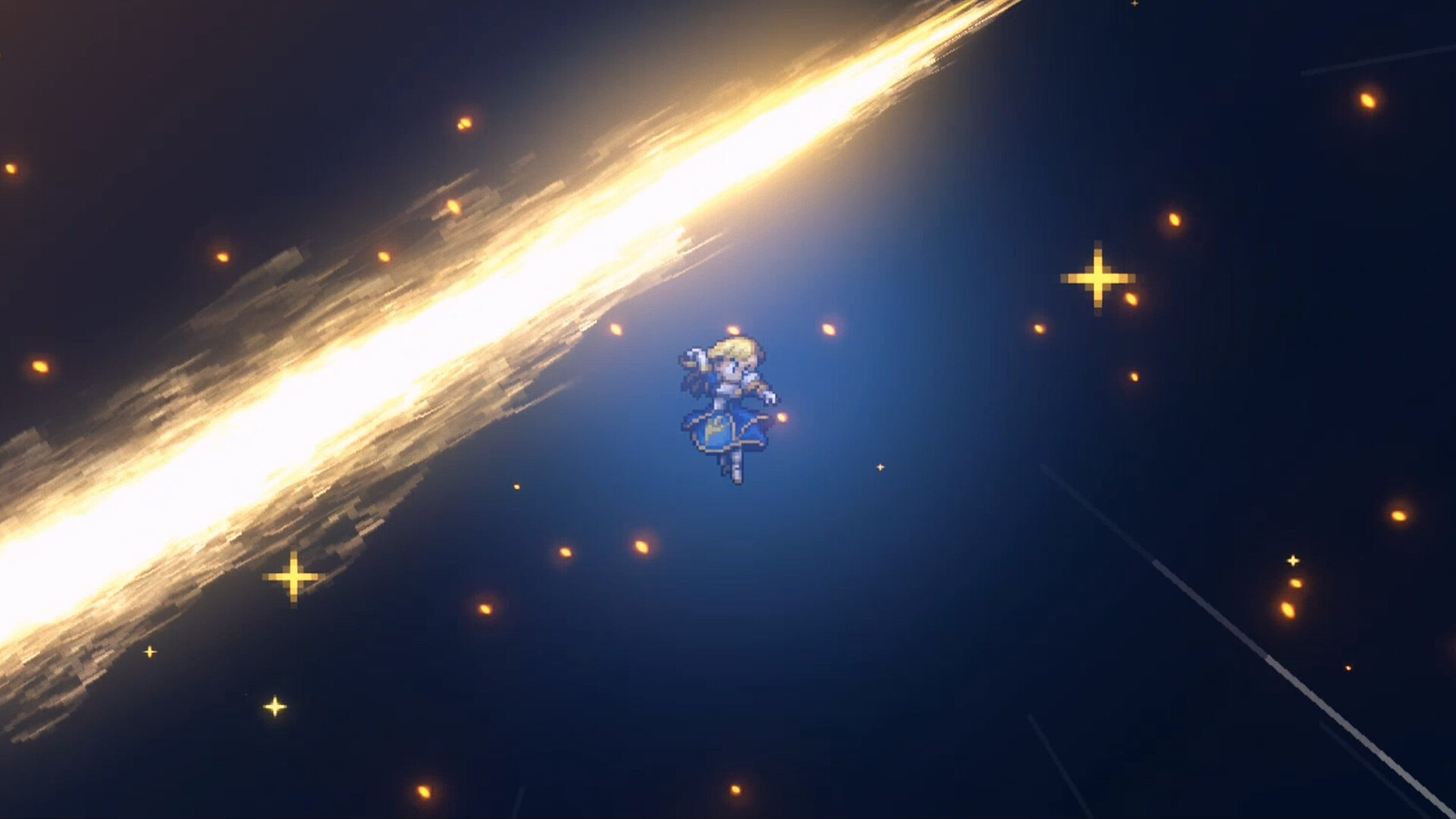
Also, this may be a free to play game, but that doesn’t mean it isn’t out to make a whole bunch of money. Yep, you know what I’m getting at – microtransactions.
Like most TRPGs, your units are your main asset, and gathering new units is where my first main gripe comes in. You’ll unlock new characters by ‘summoning’ them, and by that I mean you’ll spend one of the (roughly) 50 currencies to pay for randomised character cards, gacha style. As with all these luck based systems, the very best units have eye-wateringly small chances of showing up, and you’ll have to either farm the quests until you reach retirement age or unleash the power of your credit card to stand any chance of unlocking the entire roster. I would never begrudge developers making money from their games, but I find microtransactions attached to percentage-based mechanics to be distasteful at best and downright predatory at worst.
Using the free currency you unlock as part of the early story, I was fortunate enough to unlock a couple of Epic- and Legendary-level characters, all of whom can be used right away and with no restrictions from a progression stand point. This presents another problem, as the abilities of these characters are incredibly overpowered versus your run-of-the-mill baddies, and you’ll simply waltz through the levels if you manage to land them in your party. This ‘with rarity comes power’ model further underlines the need to gather the very best (and hardest to acquire) characters, smashing any illusions that Sword of Convallaria isn’t solidly a pay-to-win experience.
A final annoyance, like many mobile games, in order to extend their lifespan and keep you coming back, you’re limited in how many missions you can play in any given session. Each level comes with an Endurance cost attached, and once you’re out of Endurance, you’ll have to put the game down and come back later. Of course, if you really want to keep playing, you can use items to replenish your Endurance… What? You don’t have any Endurance items left? That’s okay – OF COURSE, you can buy them with real life currency to keep on going. *sigh*
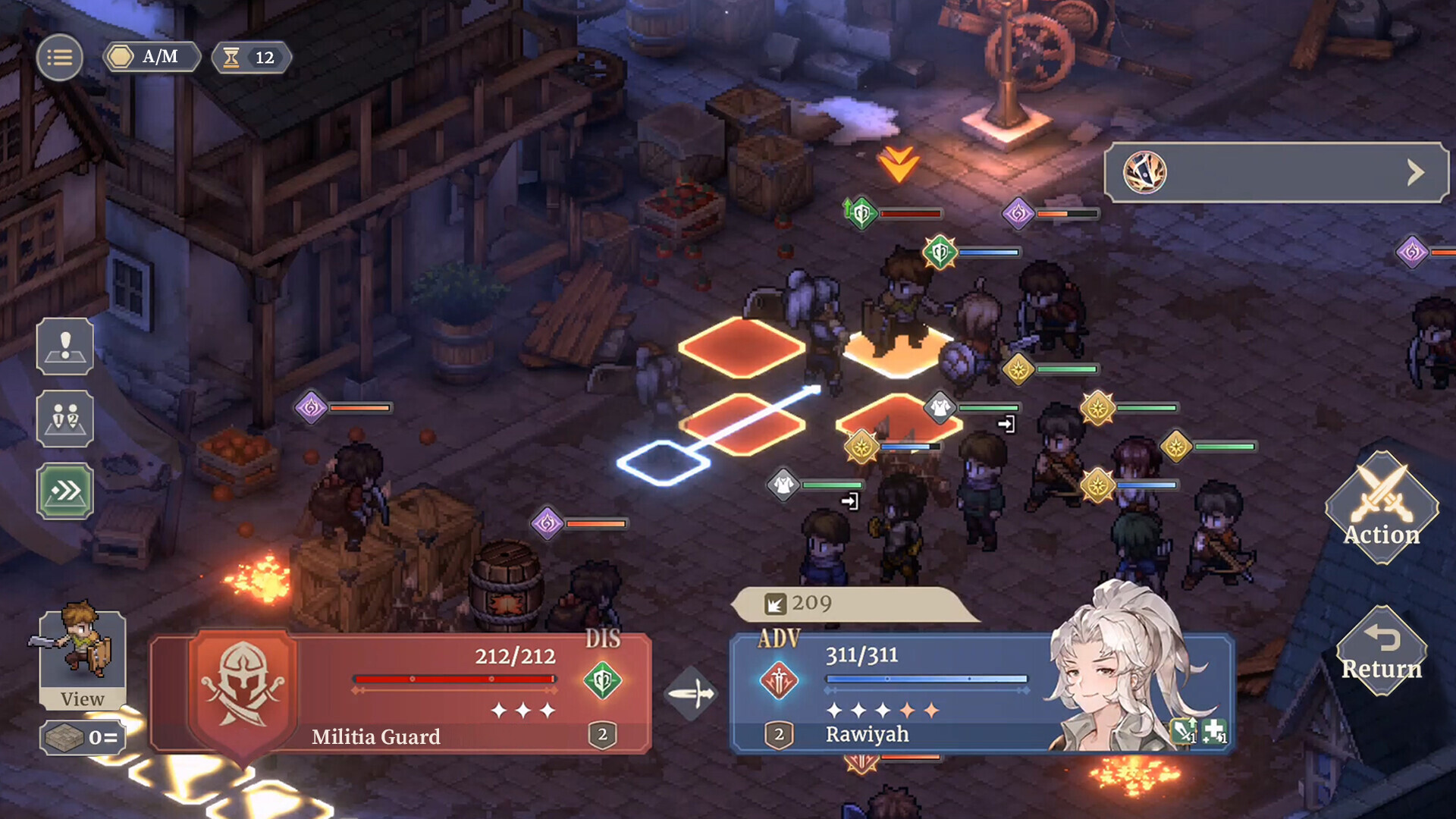
I feel bad griping about now well established (but admittedly gross) industry practices, especially since the actual gameplay in Sword of Convallaria is so solid.
From a pure TRPG standpoint, there really is a lot to like. There’s a host of different unit types, each with their own strengths and weaknesses (in a rock-paper-scissors style cycle), and there’s a plethora of abilities and special attacks to unlock that makes each unit valuable in different situations. You’re offered a variety of area of effect and ranged attacks from early on, and understanding how to best utilise all your troops is a fun exercise – I just wish the unlockable legends didn’t strong arm their way into your roster every time through their sheer betterness to the standard options.
Like the character sprites, the environments are lovely to look at, and come with a multitude of details to keep you on your toes. From defensive blockades and staggered terrain that requires real planning in your movement, to interactable items like exploding barrels that you can use to your advantage, there’s plenty to think about. Eventually you’ll also unlock ‘Tactics’, which are effectively battlefield-wide powers that can turn the tide of combat with just a couple of clicks, and understanding how to best utilise these is imperative to progression if you don’t want to put your hand in your pocket to get by.
Overall, Sword of Convallaria leaves me torn. On one hand, the stunning artwork, impressive soundtrack and detailed tactical combat are all huge positives that would normally propel the game to a much stronger recommendation. But on the flip side, the time-restricted gameplay, unbalancing gacha aspects and aggressive microtransactions are pretty sizable turn-offs. Perhaps more palatable to experienced mobile gamers than traditional TRPG fans, it irks me that so much potential is buried beneath so many unsavoury pay-to-win mechanics.
In the interest of full disclosure, VGamingNews was provided with a copy of the game in order to conduct this review.
Thanks for taking the time to read our review, If you’d like to support us further, please consider buying us a coffee!


